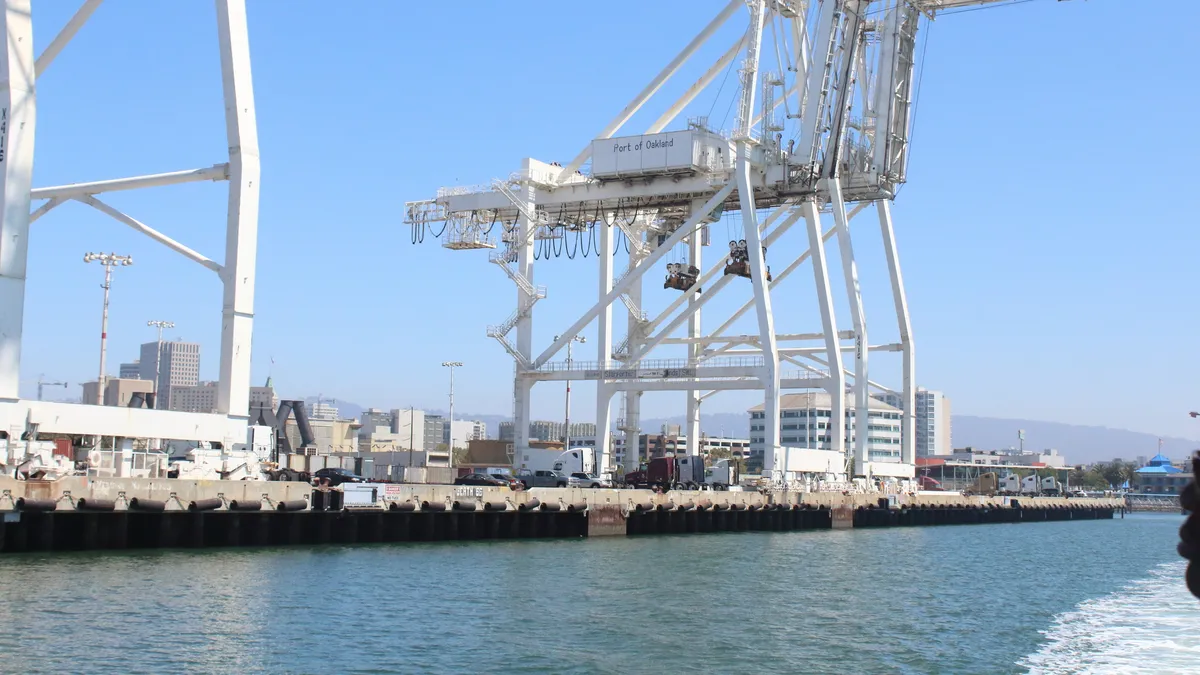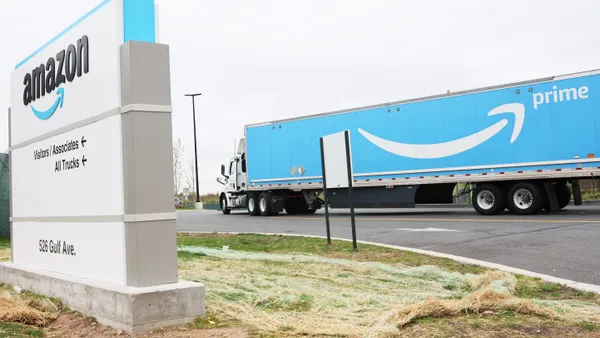Dive Brief:
- The Port of Oakland on Tuesday announced it had made truck turn times — the time it takes for a truck to move through and exit a marine terminal — publicly available.
- Making the information public should help improve cargo flow by highlighting potential bottlenecks and providing shippers with a better sense of when to expect deliveries, the port said in a press release.
- The truck turn times are available through the port's online gateway, Oakland Portal, which aggregates shipping information from each of Oakland's four marine terminals.
Dive Insight:
Access to turn time data has long been on the wishlist for supply chain stakeholders wishing to avoid backlogs at terminals. "It helps take the guesswork out of scheduling for truckers, dispatchers and the owners of cargo that move through Oakland," John Driscoll, maritime director at Port of Oakland, said in the press release.
This step by the Port of Oakland may mark an industry first, at least for making the data publicly available.
In email conversations with port representatives, Supply Chain Dive learned various ports have considered making the data publicly available, but many have yet to do so. The Port of Oakland and the American Association of Port Authorities (AAPA) pointed to Seattle as an example of a port that may have a similar portal.
"We are designing/building a community portal that would provide this information but don't currently do so," said Katie Whittier, a spokesperson for the Northwest Seaport Alliance, which includes the ports of Seattle and Tacoma.
Aaron Ellis, public affairs director at AAPA, said he had heard Port Houston, and the ports in Los Angeles, Long Beach, New York and New Jersey were also considering such a portal, if they had not already done so. Port Houston, New York and New Jersey did not confirm the comments by press time. Representatives from the Port of Long Beach (POLB) and the Port of Los Angeles confirmed the ports did not provide that information.
"I'm told that HTA, Harbor Trucking Association, provides this info in LA/POLB," said Phillip Sanfield, director of media relations at the Port of Los Angeles. "In fact, Port of Oakland is using data from HTA."
In the past years, ports have deployed various tools to help reduce both the backlog and guesswork involved in terminal moves. Most often, ports have turned to appointment systems, night gates and digital platforms in the hopes increased planning and information sharing will remove inefficiencies.
In 2017, the Port of New York and New Jersey said scheduling truck appointments helped it reduce turn times by up to 45%. Last year, Port of Oakland said night gates helped to halve turn times to 60 to 90 minutes, from previous wait times between two and three hours.














